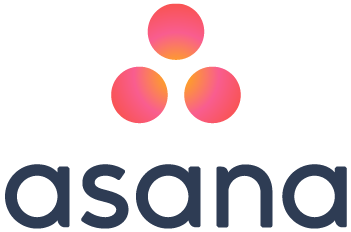Kore.ai provides integration for a built-in Asana Bot that you can use to display message notifications and execute tasks directly from your messaging channel such as Kore.ai Messenger. To use the Asana Bot, you just need to add the Bot to your channel and then configure the settings for the Bot, such as authentication to access Asana and the notification messages that you want. For more information about other Kore.ai Bots, see Adding Bots
About the Kore.ai Bot for Asana
 Asana is a task management tool that allows teams to share, plan, organize, and track progress of the tasks that each member is working on. You can use this Bot to get task updates and create, update, assign, and comment on tasks.
Asana is a task management tool that allows teams to share, plan, organize, and track progress of the tasks that each member is working on. You can use this Bot to get task updates and create, update, assign, and comment on tasks.
Twilio – This Bot is available in the Twilio text messaging application.
| Integration Type | Web Service – Connect to this Bot using a web service integration where Kore.ai polls the service for updates based on a specified interval. |
| Category | Project Management – This Bot is available in the Kore.ai Bot Store in the Project Management category. |
| Channels | Kore.ai – This Bot is available in the Kore.ai Messenger application. Email – This Bot is available using an email client. Spark – This Bot is available in the Cisco Spark messaging application. Slack – This Bot is available in the Slack messaging application. Skype – This Bot is available in the Skype messaging application. Twilio – This Bot is available in the Twilio text messaging application. |
Configuring Asana
To configure web service tasks, you need to add the Asana Bot from the Kore.ai Bot Store in your messaging channel, and then setup the task. To setup an Asana task, click Connect to Asana, enter the Asana URL for your company, for example, https://app.asana.com, your Asana account user name (not your email address), your password, and then press Enter.
After you add a web service task and are connected, you can perform tasks for Asana and setup message notifications to get notified in your messaging channel when an event occurs in Asana.
To setup an Asana task in the Kore.ai Messenger channel, click the New Task ![]() icon, and then click one of the Asana web services described in the following table.
icon, and then click one of the Asana web services described in the following table.
| TASK | TO CONFIGURE THIS TASK… |
|---|---|
| Assign Task | In the Perform Task dialog,
In a team room, you can use @asana assigntask Bot command to invoke and configure this task. |
| Comment on Task | In the Perform Task dialog,
In a team room, you can use @asana commenttask Bot command to invoke and configure this task. |
| Create Subtask | In the Perform Task dialog,
In a team room, you can use @asana newsubtask Bot command to invoke and configure this task. |
| Create Task | In the Perform Task dialog,
In a team room, you can use @asana newtask Bot command to invoke and configure this task. |
| Delete Task | In the Perform Task dialog,
In a team room, you can enter @asana deletetask Bot command to invoke and configure this task. |
| Follow Task | In the Perform Task dialog,
In a team room, you can enter @asana followtask Bot command to invoke and configure this task. |
| Show Project Tasks | In the Perform Task dialog,
In a team room, you can enter @asana getlist Bot command to invoke and configure this task. |
| Invite User | In the Perform Task dialog,
In a team room, you can enter @asana inviteuser Bot command to invoke and configure this task. |
| Mark Task as Complete | In the Perform Task dialog,
In a team room, you can enter @asana markdone Bot command to invoke and configure this task. |
| Modify Task | In the Perform Task dialog,
In a team room, you can use @asana updatetask Bot command to invoke and configure this task. |
| Update Project Status | In the Perform Task dialog,
In a team room, you can use @asana updateproj Bot command to invoke and configure this task. |
To setup message notifications in the Kore.ai Messenger channel using an Asana web service, click the New Task ![]() icon, click Get notified when…, and then click one of the following Asana web services described in the following table.
icon, click Get notified when…, and then click one of the following Asana web services described in the following table.
| TASK | TO CONFIGURE THIS TASK… |
|---|---|
| Task Update | In the Setup Task dialog,
|
| Assigned Task | In the Setup Task dialog,
|
| Project Status Updates | In the Setup Task dialog,
|
Next Steps
After the task is configured, when any of the scheduled web service events occur in Asana, a message is displayed in your preferred messaging channel.
